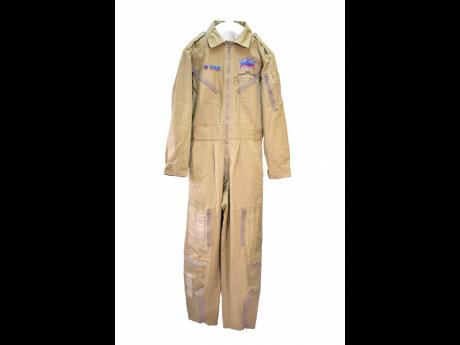Soaring above the skies
Recorded history has shown that humans have had a long-standing fascination with flying, so much so that Greeks immortalised it in the myth of a man named Icarus, who flew too close to the sun, causing his wax-covered wings to melt, casting him into the sea, resulting in his death.
Stories of flight were also recorded in Hindu texts and Sanskrit epics about Vimana, which were described as mythological flying palaces or chariots. Centuries later, the illustrations of flying apparatus of Renaissance artist Leonardo Da Vinci captured the imagination of Europe. Around 1485, the Renaissance inventor sketched plans for the ornithopter – a bird-inspired, mechanical device equipped with beating wings.
Later, there was an early prototype for what would eventually become the helicopter. This machine used a central, spiral-shaped rotor to literally screw its way into the air.
Centuries on, numerous persons continued to invent and develop flying machines and combined them with fossil fuels and combustion engines into what we know it to be today as helicopters, propeller airplanes, and jets of all sizes. Thanks to human curiosity and brave pilots, we have been able to test the boundaries of human will, skill and surpass the limits of technology time and again. One such pilot that has etched his name in the history books of aviation is Jamaican Barrington Irving Jr. In 2007, Irving became the youngest person to pilot a plane around the world solo.
GROWING UP
Barrington Irving Jr was born in Kingston, Jamaica, on November 11, 1983. He was the oldest of three brothers. When Irving was six years old, his family relocated to Miami, Florida, where his parents operated a Christian bookstore where Irving worked after school and during the holidays. Around the age of 15, Irving began to develop a strong interest in aviation. As luck would have it, he met Captain Gary Robinson, a United Airlines pilot who happened to be a customer at his parents’ bookstore. Robinson invited Barrington to visit the airport and tour the cockpit of a Boeing 777 airliner.
Seeing Irving’s interest, Robinson became Irvings’ mentor and constant source of encouragement and helped him to pursue a professional career in aviation. The tour was a turning point in Irving’s life, who quickly became focused on learning to fly.
Soon, Irving was working odd jobs at the airport in order to earn flying time in light aircraft while practising at home with a computer flight simulator. During his high school years Barrington juggled school with a variety of jobs, the proceeds of which he used to fund his aviation dreams.
He graduated from Miami Northwestern Senior High School in 2002. As a result of volunteer work teaching youth about aviation opportunities, Irving was awarded the $100,000 Florida Memorial University/ US Air Force Flight Awareness Scholarship in 2003. The scholarship paid for him to attend Florida Memorial University (FMU), where he studied aerospace science. The scholarship also covered flight training, through which Irving earned several pilot ratings and added flying hours to his logbook.
Excelled in training
Over the next three years, Barrington continued his volunteer work while he excelled in both academic and flight – training courses at FMU. He also earned his private, Commercial pilot, and Certified Flight Instructor licenses as well as his Instrument and Multiengine Rating.
But as he took to the skies, he was dreaming of a new and more ambitious goal: he wanted to fly around the world to show other youth that there was no limit to what they could achieve. If he made it, he would set several historic aviation records, which included the fact that he would be the first person of Jamaican and African descent and the youngest person ever to fly solo around the globe.
In 2004, unable to find an aircraft manufacturer willing to loan, lease, or donate a plane he could use to make aviation history, he asked manufacturers of the various plane components to donate one of their individual components to him. When he had secured $300,000 worth of donated aircraft parts, including the engine, tires, and cockpit systems, aircraft manufacturer Columbia built him the world’s fastest single-engine piston airplane, the Columbia 400, which he named ‘Inspiration’.
In 2005, as the plane was being assembled, Barrington founded a non-profit organisation, ‘Experience Aviation, Inc’, to introduce inner-city and minority children and youth to careers in aviation and aerospace. With support from corporations, foundations, individuals, and local and state education grants, Barrington and his volunteer staff set up a learning centre at Opa-locka Airport in Miami equipped with $70,000 worth of equipment including 10 custom-built Microsoft flight simulator booths. The centre opened in November 2006 with a celebration that hosted the local Mayor, city commissioners, and school officials.
On March 23, 2007, Barrington took off from Miami on his historic flight solo around the world with stops in Canada, the Azores, Spain, Italy, Greece, Egypt, Dubai, Thailand, Hong Kong, and Japan. The suit pictured was worn by Barrington on his historic flight. He donated his suit and the flight plan to the Institute of Jamaica in 2011.
Information compiled by Sharifa Balfour, assistant curator, National Museum Jamaica, Institute of Jamaica

